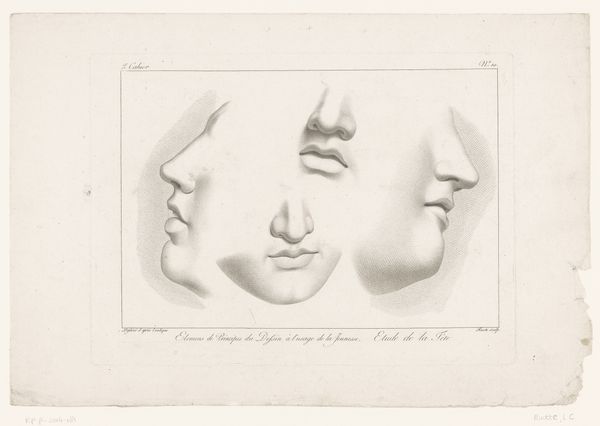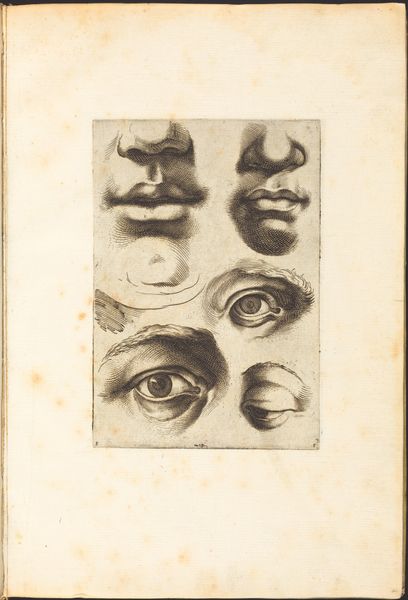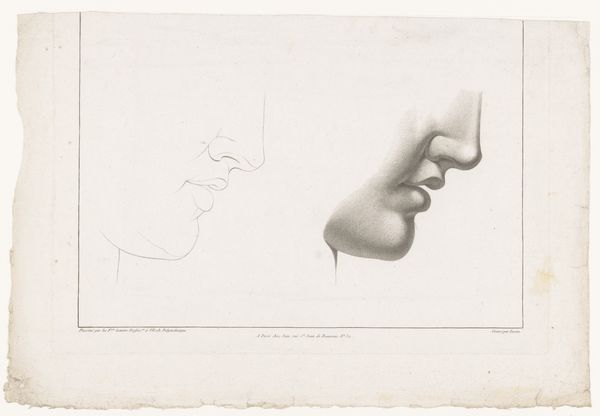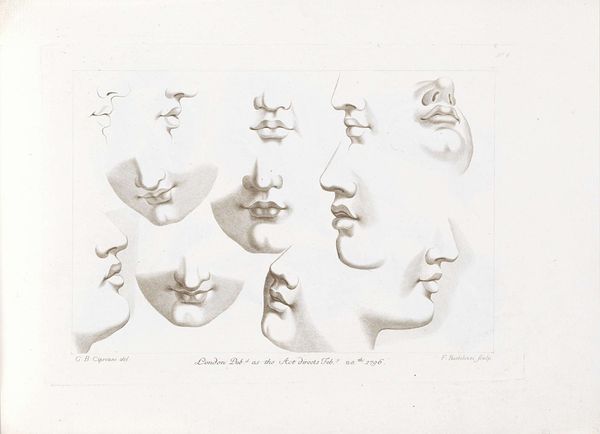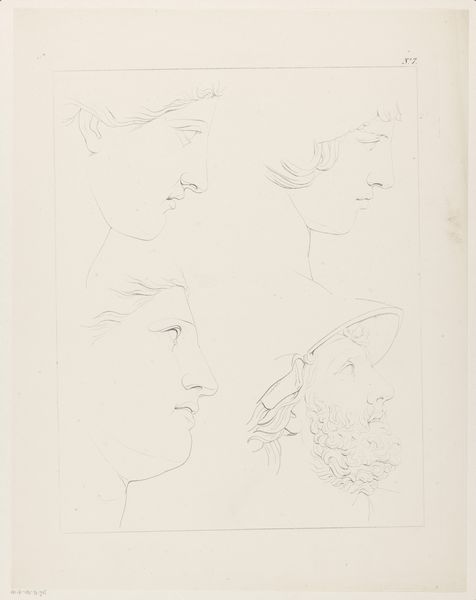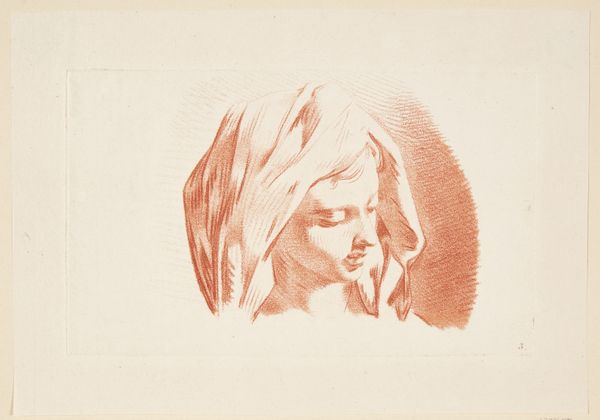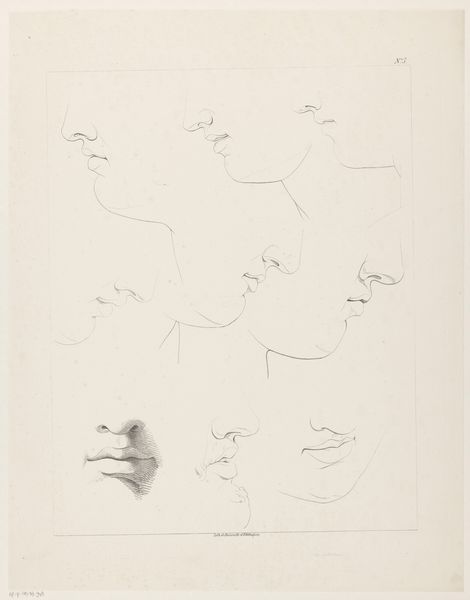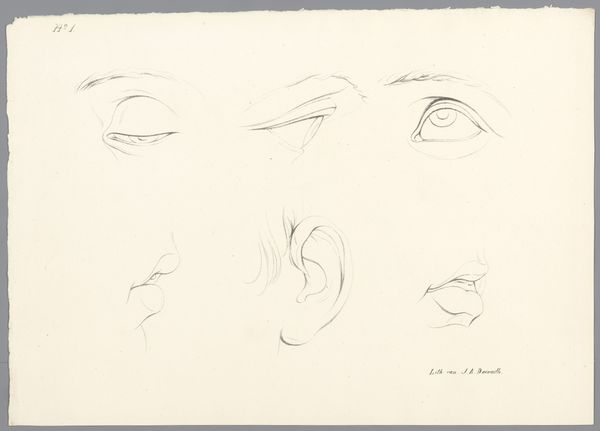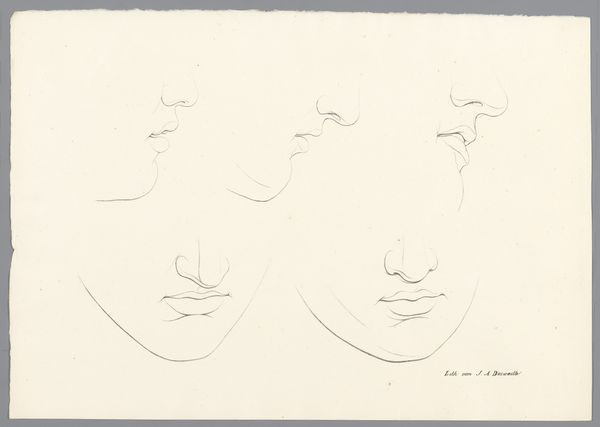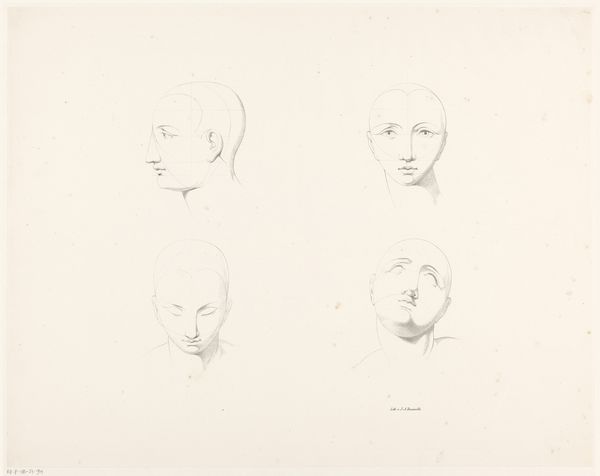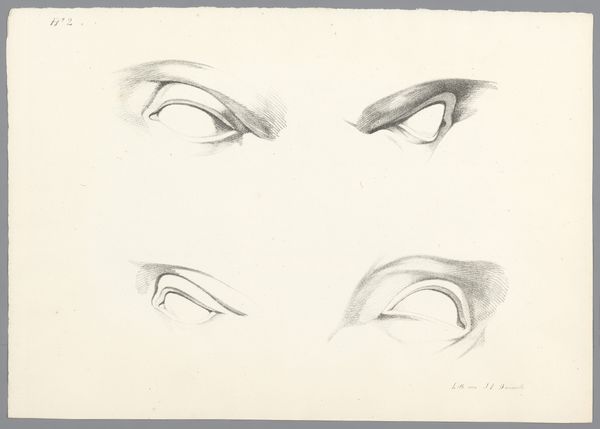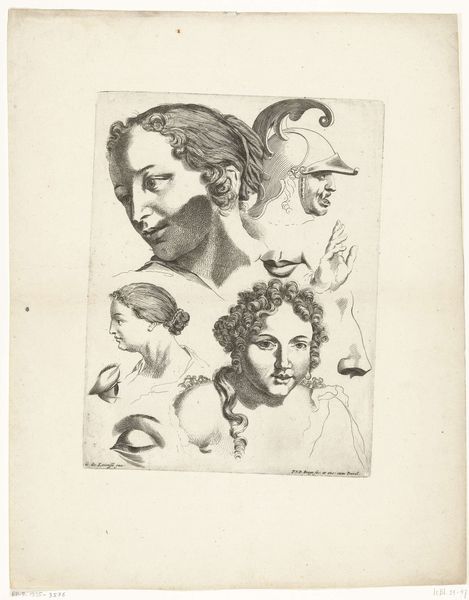
drawing, pencil
#
drawing
#
caricature
#
figuration
#
form
#
pencil
#
line
#
history-painting
#
academic-art
#
realism
Dimensions: height 230 mm, width 313 mm
Copyright: Rijks Museum: Open Domain
Editor: So, this drawing, "Compositie met neuzen, monden, ogen en een oor" by Louis Charles Ruotte, made with pencil around 1764-1806. It's, well, parts of faces, almost like a study. What do you see in a work like this, broken up like that? Curator: I see a commentary on artistic production itself. Notice how it is a collection of isolated features. The pencil lends itself to a reproductive process of making copies that can be used in endless combinations and for different ends. Think of mass production. How does isolating facial features, and making them uniform challenge notions of individuality that would've been gaining steam during the Enlightenment? Editor: So, by breaking the face down, it makes it seem manufactured instead of… naturally beautiful, right? It removes emotion or specific likeness? Curator: Precisely. This process reduces the human form to constituent parts. Each part created according to an abstract notion of idealized beauty for consumption, for social mobility, maybe? This reminds us of the societal structures underpinning artistic practice, it wasn't made in a vacuum. And academic art itself was undergoing significant production changes. Editor: Interesting. So it makes you think more about what it took to produce it than necessarily how beautiful it is? Curator: Exactly! It challenges our assumptions about where art comes from and how it is received, pointing instead to a highly organized and socially conditioned production. Does this perspective shift how you understand the drawing now? Editor: Definitely. I never considered the materials as a starting point to really explore something like the artist’s role. Curator: Thinking about process opens a richer perspective on artistic creation and value.
Comments
No comments
Be the first to comment and join the conversation on the ultimate creative platform.
